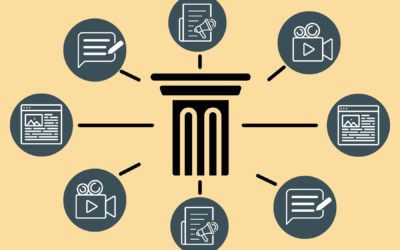At the heart of an effective marketing strategy is a deep understanding of your target audience, using case studies to evolve your audience alignment is a fantastic technique to enable an evolving understanding of your audience. Your audience is constantly changing and evolving, so what worked last year may not work this year. It is vital to listen to what the market is telling you and align your strategy with how your buyer researches and buys.
One of the most effective techniques to achieve this is a structured case study interviewing process focused on realigning your target audience personas with real customers working in the here and now.
As you know, a case study can demonstrate how one of your products and/or services solved a particular customer’s problem. And that is particularly important these days because prospects are more interested in being shown how you have helped others (in similar positions) than they are in hearing about what you do. Without case studies, and testimonials or reviews for that matter, all you’re doing is making claims in the eyes of your prospects.
Using case studies to evolve your audience alignment
A case study is a success story. A real win-win. You’re proud of how you helped the customer and you enjoy doing so. You probably want more customers like them.
As for creating good case studies, avoid using questionnaires and sending them to customers. You will be wasting your time and theirs. Why? Well, you will only ever receive answers to the questions you believe to be relevant; and those questions are based on your current understanding of the market and your current buyer persona.

You won’t learn anything new that way and you cannot evolve your marketing strategy if you are unintentionally filtering what the market is telling you.
Instead, devise an agenda for your case study interviews. Aim to gather information for the following three purposes:
- The essential facts and figures. These are the core Who did What and Why aspects of the case study. They include timeframes, project requirements, technical challenges etc.
- Methodology and process. This part of the interview drills down into the detail of How the customer (and you) worked together on a particular project. However, it’s also an opportunity for you to understand how the customer sets about all projects.
- Personal preferences. This part of the interview establishes, for example, what the customers preferred sources (and formats) of information are. You can also understand which trade magazines and news feeds grab their attention, which social media groups they follow, their trust in webinars and trade shows etc.
Again, avoid rushing in with a list of questions. The word agenda literally means ‘things to do’. In this case they are things to discuss, otherwise your customer will feel they are taking part in a survey.
If you want to get the most from case studies (as valuable pieces of marketing collateral and for understanding the needs of your ideal customer) then the interviews are best conducted by professional interviewers and writers. And if you work in an advanced engineering sector, there’s no substitute for engaging a writer who also has hands-on engineering experiences.
Only someone who has done similar work to your customers will be able to fully engage with them, capture the best possible story (for you), conduct the general market research and save your customer from investing more of their time than necessary. Indeed, a professional interviewer/writer will be able to slip those ‘Personal Preference’ questions into the interview with ease, almost as part of the banter.





